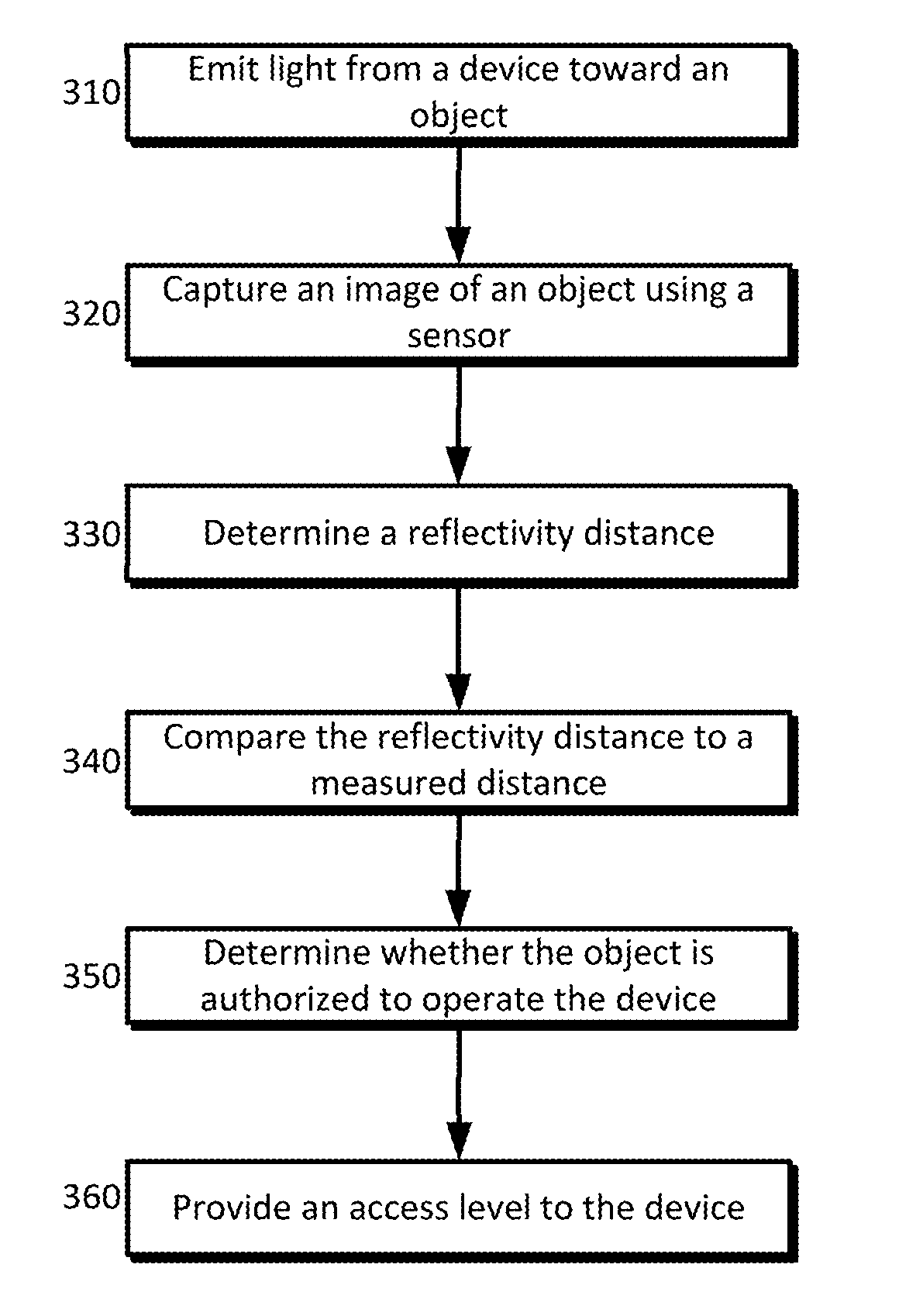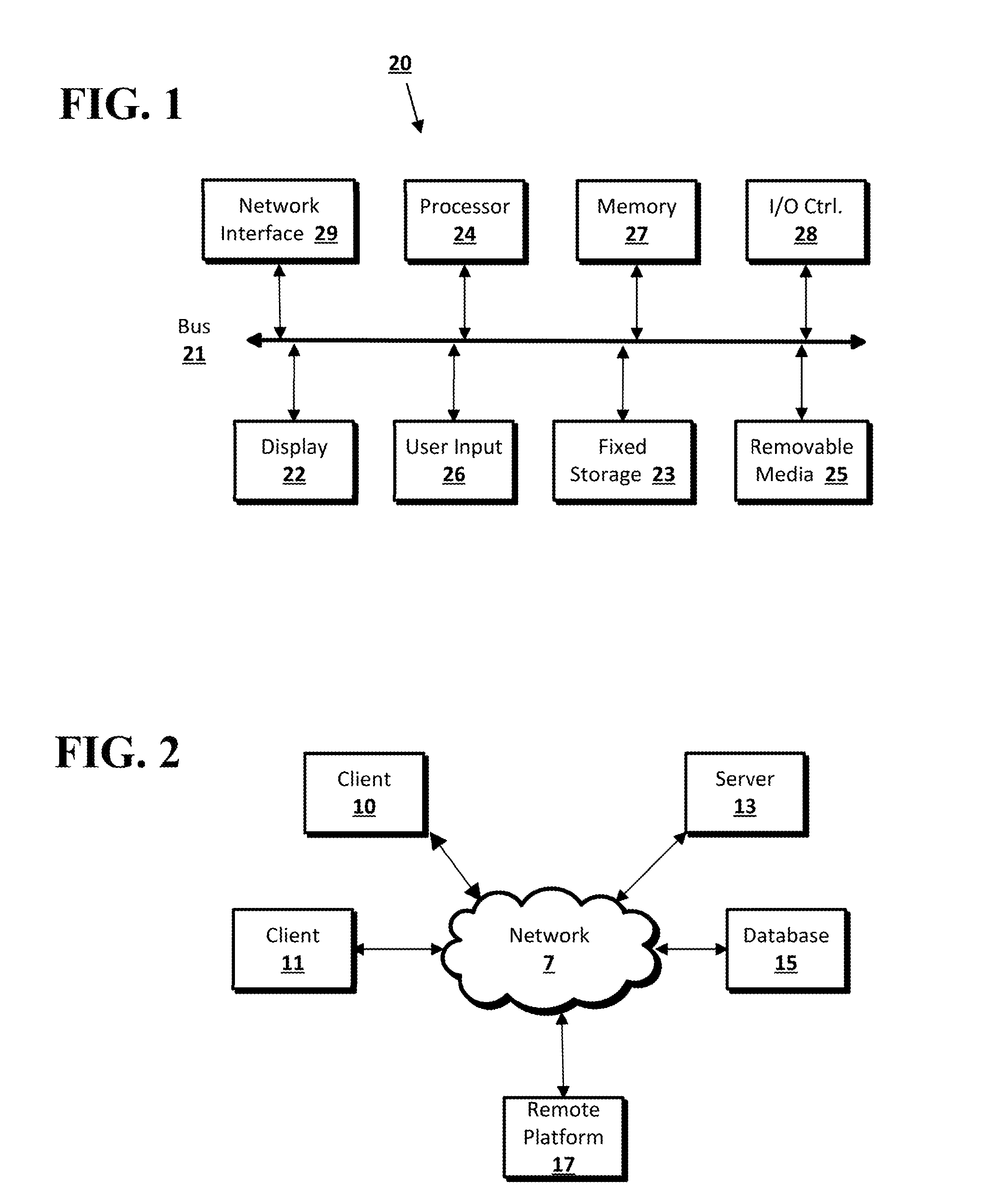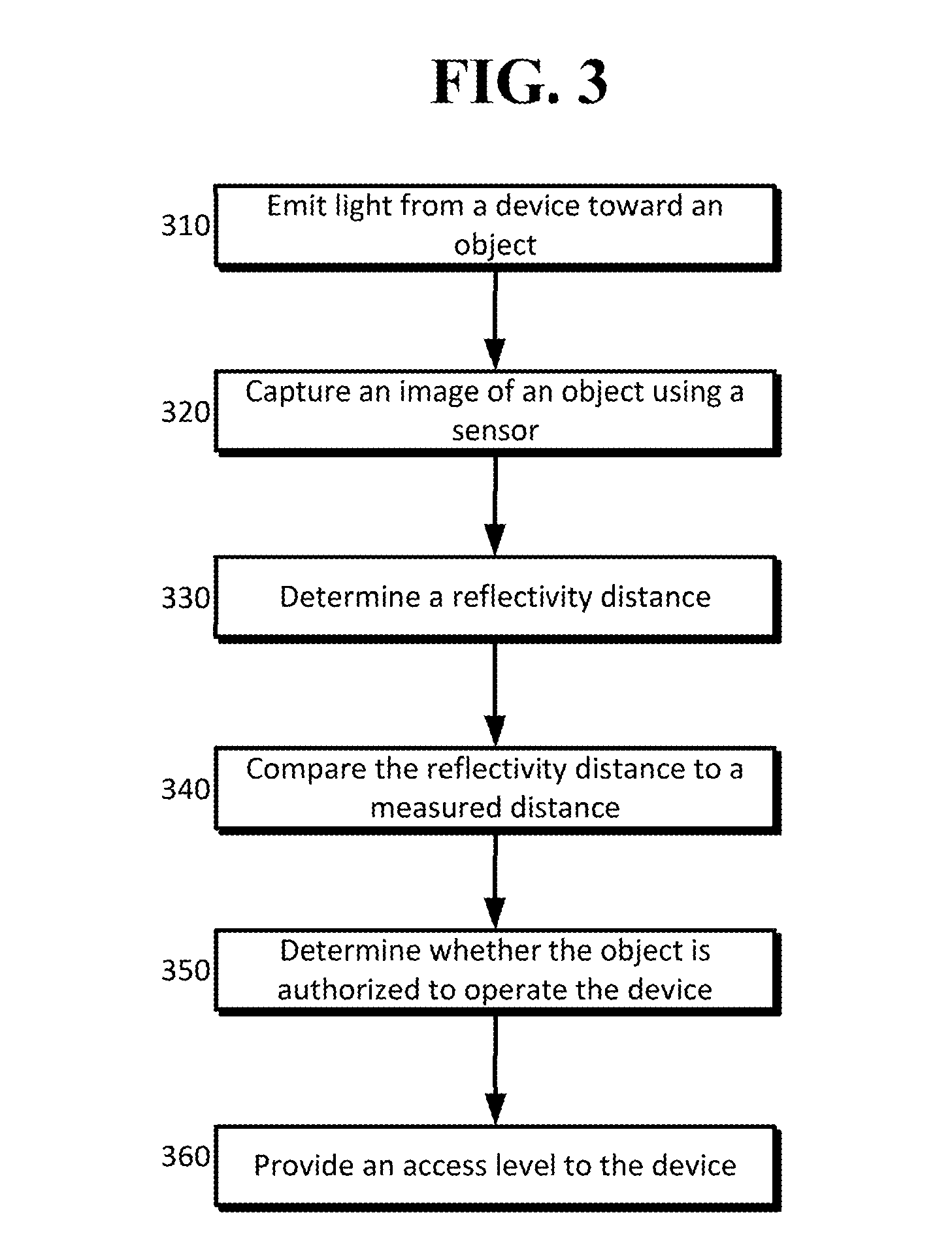Differentiating real faces from representations
a technology of representations and faces, applied in digital data authentication, instruments, computing, etc., can solve problems such as unauthorized users using spoofing methods and denying access to devices
- Summary
- Abstract
- Description
- Claims
- Application Information
AI Technical Summary
Benefits of technology
Problems solved by technology
Method used
Image
Examples
Embodiment Construction
[0012]Disclosed is an anti-spoofing technology that incorporates a light emitting source. The light may reflect off an external object and return to the device where it may be captured (e.g., by a photometric sensor) and analyzed for the time of flight of the light and reflectivity. In some configurations, the measurements for time of flight and / or reflectivity may complement a distance detected based on landmarks of a person's face. Distance measurements may be obtained for an object based on one or more of reflectivity, time of flight, and between two or more landmarks. For example, facial recognition may be used to determine that the object appears similar to the authorized user; however, one or more distance measurements based on reflectivity, time of flight, and / or two or more landmarks may not match within a confidence interval (e.g., the distance based on reflectivity may be significantly different from the time of flight distance). In such an event, the object may be denied ...
PUM
 Login to View More
Login to View More Abstract
Description
Claims
Application Information
 Login to View More
Login to View More - R&D
- Intellectual Property
- Life Sciences
- Materials
- Tech Scout
- Unparalleled Data Quality
- Higher Quality Content
- 60% Fewer Hallucinations
Browse by: Latest US Patents, China's latest patents, Technical Efficacy Thesaurus, Application Domain, Technology Topic, Popular Technical Reports.
© 2025 PatSnap. All rights reserved.Legal|Privacy policy|Modern Slavery Act Transparency Statement|Sitemap|About US| Contact US: help@patsnap.com



